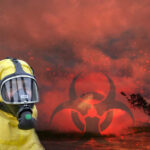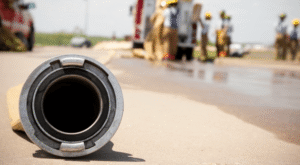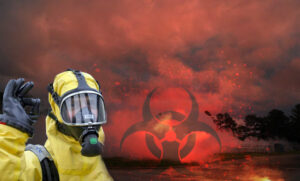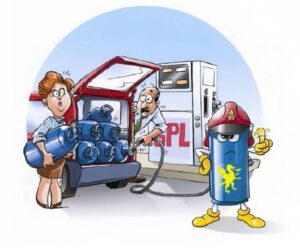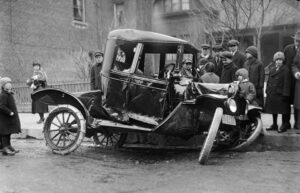
A fire blanket is a specialized, highly heat- and fire-resistant sheet of fabric designed to smother small, incipient fires. Its finely woven material does not allow oxygen to pass through, and since oxygen is essential for combustion, covering the fire deprives it of air and extinguishes it.
This guide explains what a fire blanket is made of, when to use one safely, and the best practices under European fire-safety standards (EN 1869).
What Is a Fire Blanket Made Of?
Most modern fire blankets used in homes or kitchens are made of fiberglass, a tightly woven, flexible, and highly fire-retardant material. This fabric can withstand extremely high temperatures and block oxygen flow, which makes it perfect for smothering flames.
Some fire-resistant blankets are made of leather or other heavy materials, but those are typically used for industrial settings such as welding or metalwork.
Modern fire blankets are not made of asbestos. Although you may notice fine fibers shedding from the fabric, these are fiberglass, not asbestos. Only very old models might contain hazardous materials.
Always check the manufacturer’s manual for your blanket, as instructions and temperature ratings can vary.
When to Use a Fire Blanket
A fire blanket is not designed for every fire. It works best for small, contained fires that can be completely covered.
1. Small Incipient Fires
Use a fire blanket when the fire is small, just beginning, and can be covered entirely by the blanket’s surface area.
Typical examples include:
- A pan or stovetop fire
- A small trash-bin fire
- A contained fire on a flat surface
If the flames are larger than the blanket or spreading quickly, the blanket won’t help, evacuate immediately and call 112.
If the fire is in a corner or on an uneven surface, where it cannot be fully covered, a fire extinguisher is likely the better choice.
2. Clothing on Fire
Fire blankets can also be used if someone’s clothing catches fire. The goal is to:
- Wrap the blanket tightly around the person to cut off oxygen.
- Have them stop, drop, and roll until the flames are fully extinguished.
This can save lives, but it requires calm, clear action, which is why basic fire-safety training is valuable.
When Not to Use a Fire Blanket
Avoid using a fire blanket in the following cases:
- The fire is too large or spreading rapidly
- The surface is irregular or inaccessible
- You are not trained or unsure of the procedure
- Smoke or fumes make it unsafe to stay
- Evacuation is the safer option
If the fire cannot be controlled quickly, evacuate calmly and call 112 — the EU emergency number.

How to Use a Fire Blanket
Always follow the manufacturer’s instructions and local fire-safety training.
A. For Small Fires
- Assess your safety. If it’s unsafe, evacuate and call 112.
- Turn off the heat source. Shut off gas or electricity if possible.
- Put on gloves. They help protect from heat or fiberglass irritation.
- Pull down the blanket. Most fire blankets have two pull-tabs at the bottom of the pouch.
- Fold the top edge over your hands and forearms. This protects your skin.
- Approach carefully and place the blanket over the fire. Do not throw it.
- Leave the blanket in place for 15–30 minutes to ensure the fire is fully out.
- Call emergency services to confirm the area is safe.
B. For Clothing Fires
- Stay calm and protect your hands with gloves if available.
- Pull the blanket down sharply from its container.
- Wrap your hands in the edge of the blanket.
- Approach carefully and hold it as a shield.
- Wrap the person completely to cut off oxygen.
- Have them stop, drop, and roll to extinguish flames.
- Call 112 for immediate medical help.
Where to Keep a Fire Blanket
Keep your blanket where you can grab it instantly. Common locations include:
- Domestic kitchens
- Commercial or industrial kitchens
- Boats and caravans near cooking areas
- Vehicles (for small electrical or engine fires)
- Workshops or welding areas
Accessibility is key, a fire blanket should be clearly visible and easy to reach, not hidden behind appliances or locked away.
Fire Blankets in the European Union
In the EU, fire blankets must comply with EN 1869, the European Standard for domestic and light commercial use. Look for:
- The EN 1869 certification label
- Clear pictograms and usage instructions
- Wall-mounted pouches with pull-tabs
- Instructions in your local language
Fire blankets are especially effective for Class F kitchen fires involving cooking oils, where using powder extinguishers could spread the flames or contaminate surfaces.
In commercial kitchens, EU regulations usually require both a fire blanket and an approved extinguisher (such as a wet-chemical type) — along with trained staff.
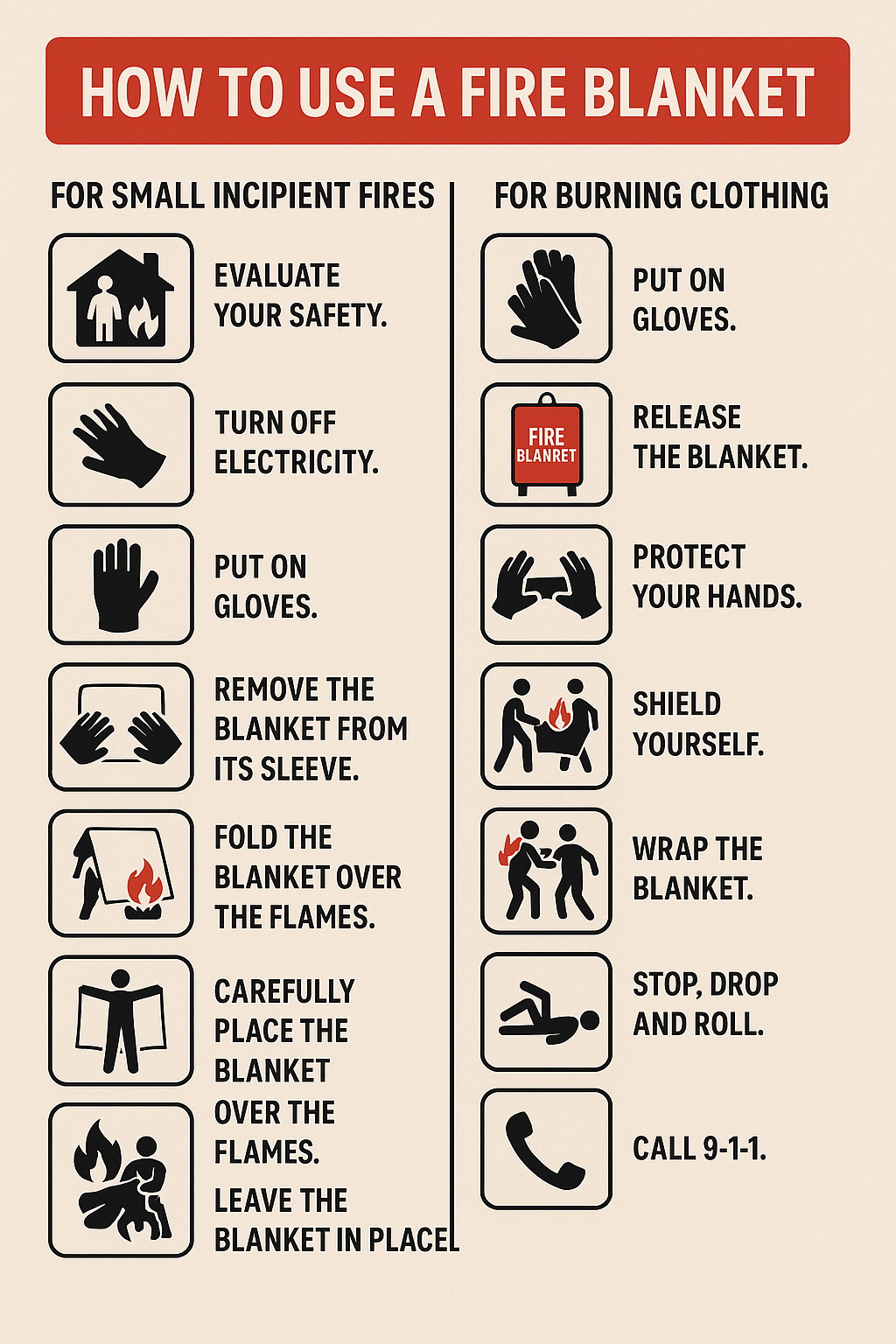
Is a Fire Blanket Reusable?
Generally, no. Once used, a fire blanket should be disposed of and replaced. High heat can damage the fibers, and reusing it can be unsafe. Always follow your manufacturer’s guidance.
As an epilogue, Fire blankets may seem simple, just a folded piece of fabric on a wall, but in the first seconds of a small fire, simplicity can save lives. A calm, trained action can prevent disaster.
However, a fire blanket is not a replacement for extinguishers, smoke alarms, or evacuation plans. Its power lies in speed, training, and readiness.
Remember:
- Choose an EN 1869-certified blanket.
- Keep it visible and accessible.
- Train everyone to use it.
- Replace it after use.
- When in doubt – evacuate and call 112.
Disclaimer: This article provides general fire-safety information for educational purposes. Always follow your product’s instructions and your local fire-safety regulations.
| Article by John S. Retsios | |
 |
John S. Retsios is a Health & Safety Consultant and personal protective equipment (PPE) trainer with more than 20 years of field experience. He specializes in equipment and response solutions for hazardous materials (HazMat) and CBRNe (Chemical, Biological, Radiological, Nuclear, and Explosive) emergencies, providing comprehensive expertise to organizations and professionals operating in demanding environments. » https://www.linkedin.com |






